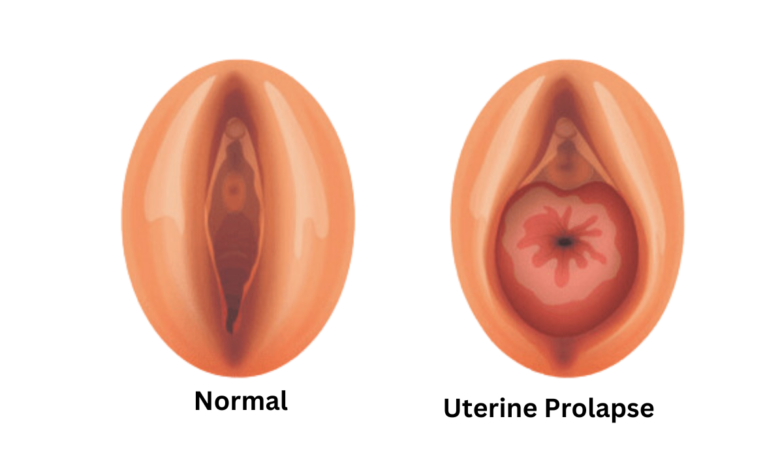Uterine Prolapse: A condition where the uterus slips down into the vagina.
Women'sHealth ,Gynecology ,PelvicFloor , Menopause ,Childbirth ,SymptomsOfUterineProlapse ,TreatmentForUterineProlapse

What is this Uterine Prolapse?
Uterine prolapse is a condition where the uterus, a female reproductive organ, slips down into the vagina. This occurs when the muscles and tissues supporting the uterus weaken, allowing it to descend from its normal position.
what are the symptoms of Uterine Prolapse ?
Symptoms of uterine prolapse can vary depending on the severity of the condition. They may include:
- Pelvic pressure or fullness
- Bulging or feeling of something falling out of the vagina
- Backache
- Difficulty urinating or defecating
- Painful intercourse
who can suffer from Uterine Prolapse ?
Women of all ages can experience uterine prolapse. However, it is more common in women who have:
- Given birth
- Gone through menopause
- Had chronic constipation or cough
- Lifted heavy objects frequently
What are the types of Uterine Prolapse ?
Uterine prolapse can be classified based on the degree to which the uterus has descended into the vagina:
- First degree: The top of the uterus is still above the top of the vagina.
- Second degree: The top of the uterus is at the level of the vaginal opening.
- Third degree: The uterus has prolapsed completely outside the vagina.
Which diagnostic tests are available for Uterine Prolapse?
To diagnose uterine prolapse, your doctor will likely perform a physical examination. They may also use imaging tests, such as:
- Pelvic ultrasound
- MRI
- CT scan
What is the treatment of Uterine Prolapse?
Treatment options for uterine prolapse depend on the severity of the condition and the patient’s preferences. They may include:
- Lifestyle changes: These can include losing weight, avoiding heavy lifting, and doing pelvic floor exercises (Kegels).
- Pessary: A pessary is a device inserted into the vagina to support the uterus.
- Surgery: In severe cases, surgery may be necessary to repair the pelvic floor muscles and ligaments.
Which diet I should take, if any ?
There is no specific diet recommended for uterine prolapse. However, maintaining a healthy weight can help reduce strain on the pelvic floor muscles.
Which speciality of the doctor will treat Uterine Prolapse ?
A gynecologist is the specialist who treats uterine prolapse.
Is Uterine Prolapse completely curable ?
Uterine prolapse can be treated effectively. However, it may recur, especially if the underlying causes are not addressed.





